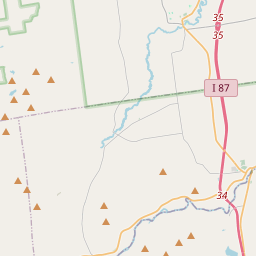Burlington Civil War Memorial
Historical marker location:





1907
April 12, 1861: The Civil War begins with the Confederate attack on Fort Sumter, located in South Carolina's Charleston Harbor.
April 15, 1861: President Abraham Lincoln issues a call for 75,000 volunteers to serve in the Union Army to suppress the rebellion.
May 24, 1861: The first major land battle, known as the First Battle of Bull Run (or First Battle of Manassas), takes place in Virginia. It ends in Confederate victory.
September 17, 1862: The Battle of Antietam in Maryland becomes the bloodiest single-day battle in American history, with heavy casualties on both sides. The Union forces, commanded by General George McClellan, manage to halt Confederate General Robert E. Lee's advance into Union territory.
January 1, 1863: President Lincoln issues the Emancipation Proclamation, declaring that all slaves in Confederate-held territories are to be set free. However, the proclamation does not immediately free all slaves in the United States.
July 1-3, 1863: The Battle of Gettysburg in Pennsylvania takes place, resulting in a significant Union victory and inflicting heavy casualties on Confederate forces. It marks a turning point in the war.
November 19, 1863: President Lincoln delivers the Gettysburg Address, emphasizing the principles of liberty, equality, and the preservation of the Union.
April 9, 1865: General Robert E. Lee surrenders to Union General Ulysses S. Grant at Appomattox Court House in Virginia, effectively ending the Civil War.
April 14, 1865: President Lincoln is assassinated by John Wilkes Booth while attending a play at Ford's Theatre in Washington, D.C.
May 10, 1865: Confederate President Jefferson Davis is captured, signaling the collapse of the Confederate government.
December 6, 1865: The Thirteenth Amendment to the United States Constitution is ratified, officially abolishing slavery throughout the country.
While this timeline provides an overview of key events, it is important to note that the Civil War spanned over four years, from 1861 to 1865, and encompassed numerous battles, campaigns, and political developments that shaped the course of American history.
Vermont was once a leading producer of marble: In the 19th century, Vermont was one of the leading producers of marble in the United States. The state's marble quarries produced high-quality marble that was used in buildings across the country, including the U.S. Capitol building and the New York Public Library.
By the late 18th century, Chittenden County experienced rapid growth as more settlers moved into the region. In 1783, the town of Burlington was incorporated, named after the town of Burlington, Massachusetts. Burlington quickly became a major economic and cultural hub in the county, with its strategic location on Lake Champlain and proximity to major trade routes. The town also saw the establishment of the University of Vermont in 1791, which further solidified Burlington's importance.
During the 19th century, Chittenden County's economy diversified, with the rise of manufacturing and industry in the area. Industries such as lumber, textiles, and farming flourished, and new towns and villages were established. The arrival of the railroad in the mid-1800s further spurred economic growth and connected Chittenden County to larger markets both within Vermont and beyond.
In the 20th century, Chittenden County continued to grow and develop rapidly. The county experienced a population boom, particularly in the post-World War II era, with suburbanization and the expansion of Burlington. The University of Vermont also grew in size and reputation, attracting more students and contributing to the county's intellectual and cultural vibrancy. Today, Chittenden County remains one of Vermont's most populous and economically prosperous regions, known for its beautiful natural landscapes, thriving arts scene, and strong sense of community.
Chittenden County Timeline
This timeline provides a glimpse into the major events and milestones that have shaped the history of Chittenden County, Vermont.
- 1763: Chittenden County is chartered by colonial governor Benning Wentworth and named after Thomas Chittenden, the first Governor of Vermont.
- 1783: The American Revolutionary War ends, and Chittenden County becomes part of the newly established state of Vermont.
- 1800: Burlington, the largest city in Chittenden County, is incorporated.
- 1813: The University of Vermont is founded in Burlington.
- 1840s: The Champlain and Connecticut River Railroad is constructed, connecting Chittenden County to other parts of Vermont and New England.
- 1862: The first public park in the United States, Shelburne Farms, is established in Shelburne.
- 1888: The University of Vermont Medical Center (formerly known as the Mary Fletcher Hospital) is founded in Burlington.
- 1927: The first airport in Vermont, the Burlington International Airport, opens in South Burlington.
- 1978: The Vermont Teddy Bear Company is founded in Shelburne.
- 2002: The Church Street Marketplace, a pedestrian-only shopping and dining area, celebrates its 20th anniversary in Burlington.